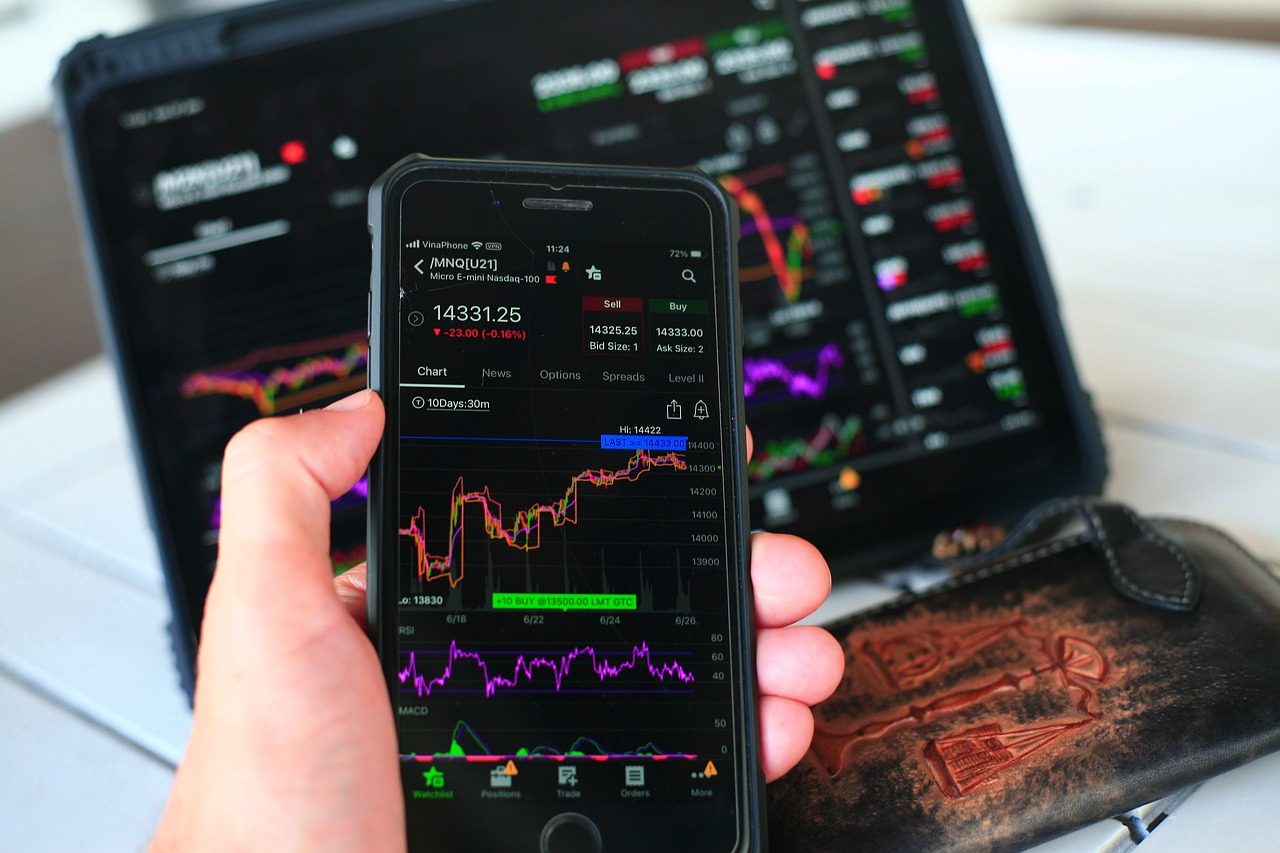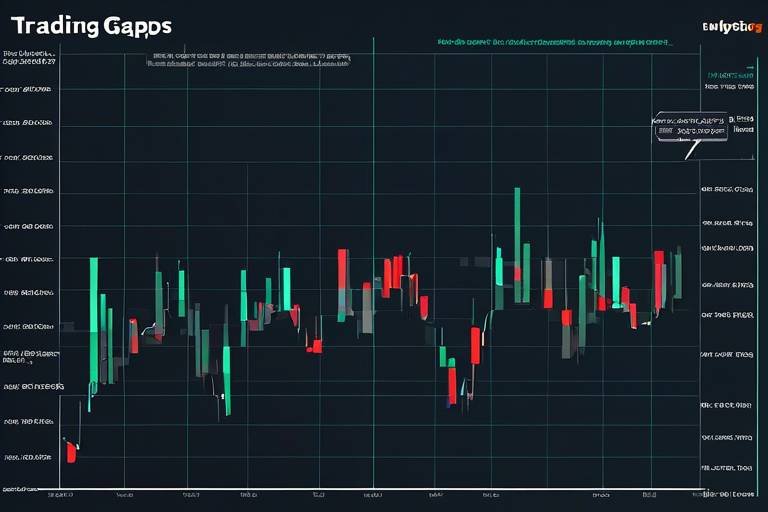How to Analyze Cryptocurrency Market Sentiment
In the ever-evolving world of cryptocurrency, understanding market sentiment is not just a luxury—it's a necessity. Market sentiment refers to the overall attitude of investors towards a specific cryptocurrency, and it can significantly influence price movements and trading strategies. Imagine walking into a crowded room where everyone is buzzing about a new trend; that energy can sway decisions and perceptions. Similarly, in the crypto market, the collective mood can dictate whether prices soar or plummet. By analyzing sentiment, traders can gain valuable insights into potential market shifts, making informed decisions that could lead to profitable outcomes.
So, how do you tap into this elusive sentiment? Well, it’s all about recognizing the signs and indicators that reveal the mood of the market. Just like a weather forecast helps you prepare for a storm, understanding market sentiment equips you with the tools to navigate the often turbulent waters of cryptocurrency trading. In this article, we will explore various methods to analyze market sentiment, from social media trends to technical analysis techniques. By the end, you’ll be better prepared to read the market’s mood and make strategic trading decisions.
Market sentiment is like the heartbeat of the cryptocurrency world. It reflects how investors feel about a particular coin or token and can be influenced by a myriad of factors, including news events, social media chatter, and economic indicators. Understanding this sentiment is crucial for successful trading, as it can lead to better timing and more informed decisions. Think of it as tuning into the pulse of the market; when you know what others are feeling, you can better position yourself to take advantage of opportunities.
To effectively analyze market sentiment, traders often look at a combination of quantitative and qualitative data. Quantitative data might include metrics like trading volume and price trends, while qualitative data could involve analyzing social media posts or news articles. By synthesizing these insights, traders can develop a more comprehensive understanding of market dynamics.
When it comes to gauging market sentiment, several key indicators can provide valuable insights. These include:
- Trading Volume: A surge in trading volume often indicates heightened interest and can signal potential price movements.
- Price Trends: Analyzing price charts over time can help identify bullish or bearish trends, reflecting overall market sentiment.
- Social Media Activity: Monitoring discussions on platforms like Twitter and Reddit can reveal how investors are feeling about a cryptocurrency.
Identifying these indicators is essential for understanding the market's mood. The interplay between these factors can often provide clues about where the market might be headed next. For instance, if trading volume spikes alongside positive social media sentiment, it could be a strong indicator of an impending price increase.
In today’s digital age, social media platforms play a pivotal role in shaping market sentiment. Twitter, Reddit, and even TikTok have become hotspots for discussions about cryptocurrencies. By analyzing trends and discussions on these platforms, traders can gain insights into investor sentiment and potential price movements. For example, a sudden uptick in positive tweets about a particular coin might indicate growing investor confidence, while a flurry of negative posts could suggest a looming downturn.
Fortunately, several tools exist to help traders analyze social media sentiment. These tools utilize algorithms to assess whether the overall sentiment towards a cryptocurrency is positive, negative, or neutral based on user interactions and content. Some popular sentiment analysis tools include:
| Tool Name | Description |
|---|---|
| CryptoMood | Tracks social media sentiment and news impact on various cryptocurrencies. |
| Sentiment Analysis API | Provides sentiment scores based on social media posts and news articles. |
| CoinTrendz | Analyzes Twitter activity for various cryptocurrencies to gauge market sentiment. |
By leveraging these tools, traders can make more informed decisions based on current market sentiment rather than relying solely on gut feelings or outdated information.
Examining past cases where social media sentiment significantly impacted cryptocurrency prices can provide practical insights into how to interpret current discussions. For instance, during the infamous Dogecoin surge in 2021, social media sentiment played a crucial role in driving prices to new heights. Analyzing such case studies can help traders understand the nuances of sentiment analysis and how it can inform their strategies.
Combining technical analysis with sentiment analysis can enhance trading strategies. While sentiment analysis gives you a feel for the market's mood, technical analysis provides the hard data needed to make informed decisions. Understanding chart patterns and indicators can help confirm or challenge sentiment-driven decisions. For example, if sentiment is bullish but technical indicators show a potential reversal, it might be wise to proceed with caution.
News events can drastically influence market sentiment. Major announcements, regulatory changes, and technological advancements can shift investor perceptions almost overnight. Keeping track of these events is essential for understanding market reactions. For instance, news of a country adopting Bitcoin as legal tender can create a wave of positive sentiment, while negative regulatory news can lead to panic selling.
Economic indicators, such as inflation rates and employment data, can also affect cryptocurrency sentiment. Analyzing these factors provides a broader context for market movements. For example, rising inflation might lead investors to flock to cryptocurrencies as a hedge, thus driving up prices. On the other hand, poor economic data could lead to a risk-off sentiment, causing investors to pull back from speculative assets like cryptocurrencies.
Studying historical investor behavior during various market conditions can reveal patterns that inform future sentiment analysis. By understanding how investors reacted in the past, traders can better predict potential market shifts. Patterns of fear and greed often emerge, and recognizing these cycles can be the key to making timely and profitable decisions.
Q: How can I start analyzing cryptocurrency market sentiment?
A: Begin by monitoring social media platforms, using sentiment analysis tools, and keeping an eye on trading volumes and price trends.
Q: What tools are best for sentiment analysis?
A: Some popular tools include CryptoMood, Sentiment Analysis API, and CoinTrendz. These can help you gauge market sentiment effectively.
Q: Why is market sentiment important in trading?
A: Market sentiment can influence price movements, and understanding it can help you make more informed trading decisions.

Understanding Market Sentiment
Market sentiment is like the heartbeat of the cryptocurrency world. It embodies the collective emotions and attitudes of investors towards a specific cryptocurrency at any given time. Imagine walking into a room filled with people; their energy and mood can influence your own feelings and actions. Similarly, in the crypto market, sentiment can sway prices and guide trading strategies. Understanding this concept is not just beneficial; it's crucial for anyone looking to navigate the often tumultuous waters of cryptocurrency trading.
Think of market sentiment as a barometer for investor confidence. When sentiment is positive, it often leads to increased buying activity, pushing prices up. Conversely, when sentiment turns negative, you might witness a sell-off, causing prices to plummet. The relationship between sentiment and price movement is intricate and can often be observed through various indicators. For instance, a surge in positive news or developments surrounding a cryptocurrency can create a ripple effect, leading to an influx of new investors eager to capitalize on the momentum.
So, how do we measure this elusive sentiment? There are several key indicators that traders and analysts often look at. These include:
- Trading Volume: High trading volumes can indicate strong interest and positive sentiment, while low volumes may suggest uncertainty.
- Price Trends: Analyzing historical price movements can provide insights into how sentiment has shifted over time.
- Social Media Activity: Platforms like Twitter and Reddit have become vital in gauging public opinion and sentiment towards cryptocurrencies.
By monitoring these indicators, traders can gain a clearer picture of the market landscape and make more informed decisions. It's like having a map before embarking on a journey; it helps you navigate potential pitfalls and seize opportunities.
In summary, understanding market sentiment is essential for anyone involved in cryptocurrency trading. It helps you anticipate market movements, understand investor behavior, and refine your trading strategies. Just as in life, where being attuned to the feelings of those around you can lead to better relationships, being aware of market sentiment can lead to more successful trading outcomes.

Key Indicators of Sentiment
When diving into the cryptocurrency market, understanding the is like having a treasure map—it guides you through the often tumultuous waters of trading. Market sentiment is not just a fleeting emotion; it's a reflection of the collective mindset of investors, and several indicators can help you gauge this sentiment effectively. By keeping an eye on these indicators, you can make informed trading decisions that align with market trends.
One of the primary indicators is trading volume. When trading volume spikes, it often indicates heightened interest in a specific cryptocurrency. Imagine a crowded concert where everyone is cheering; that energy can drive prices up as more people jump on the bandwagon. Conversely, low trading volume may suggest a lack of interest, which can lead to price stagnation or declines. Monitoring trading volume, therefore, is essential for understanding how engaged investors are with a particular asset.
Another crucial indicator is price trends. Observing how prices move over time can reveal a lot about market sentiment. For instance, if a cryptocurrency has been consistently rising, it might suggest that investors are optimistic about its future. On the flip side, a downtrend could signal fear or skepticism among investors. Analyzing price charts can help you identify patterns—like a detective piecing together clues to solve a mystery.
Additionally, social media activity is a powerful sentiment indicator. Platforms like Twitter and Reddit are buzzing with discussions about cryptocurrencies. When you see a surge in positive mentions or trending hashtags related to a coin, it can often precede a price increase. However, just as you wouldn’t trust every rumor you hear at a party, it’s crucial to evaluate the sentiment behind those social media posts critically.
To summarize, here are some key indicators to watch:
- Trading Volume: High volume suggests strong interest; low volume may indicate disinterest.
- Price Trends: Rising prices often reflect optimism, while falling prices may reveal fear.
- Social Media Activity: Increased positive discussions can hint at potential price rallies.
By paying attention to these indicators, you can better understand the market's mood and make more strategic trading decisions. Just remember, sentiment analysis is not an exact science; it’s more like reading the weather—sometimes it’s cloudy, and other times it’s sunny, but being prepared for any outcome is key to navigating the unpredictable world of cryptocurrency.

Social Media Analysis
In today's digital age, social media has become a powerful tool for gauging cryptocurrency market sentiment. Platforms like Twitter, Reddit, and Telegram are not just places for casual conversation; they are hotspots where traders and investors share insights, opinions, and predictions. Have you ever wondered why a coin suddenly spikes or plummets? Often, the answer lies in the chatter of social media. When a cryptocurrency gains traction on these platforms, it can lead to a surge in interest and trading activity, impacting prices significantly.
Analyzing social media sentiment involves looking at various factors, such as the volume of mentions, the nature of the discussions, and the overall tone of the conversations. For instance, if a cryptocurrency is being discussed widely with a positive sentiment, it can indicate a bullish trend. Conversely, a surge in negative discussions may suggest a bearish outlook. To make sense of this data, traders often utilize sentiment analysis tools that aggregate and analyze social media interactions.
Consider the following key aspects when diving into social media analysis:
- Volume of Mentions: The number of times a cryptocurrency is mentioned can indicate its popularity. A sudden spike in mentions often precedes price movements.
- Sentiment Score: Tools can assign a sentiment score based on the positivity or negativity of the discussions. A high positive score usually correlates with price increases.
- Influencer Impact: Influential figures in the crypto space can sway public opinion. A tweet from a well-known figure can send prices soaring or crashing.
Moreover, examining case studies where social media sentiment played a pivotal role can provide invaluable insights. For example, during the Dogecoin craze, social media platforms were ablaze with discussions, memes, and endorsements from celebrities. This frenzy not only drove the price up but also showcased the immense power of collective sentiment in the crypto market.
By integrating social media analysis into your trading strategy, you equip yourself with a unique perspective on market trends. It’s like having a window into the minds of thousands of investors. However, it’s crucial to remain skeptical and verify information before making any trading decisions, as social media can also be a breeding ground for misinformation.
Q1: How can I start analyzing social media sentiment for cryptocurrencies?
A1: You can start by following key influencers, joining relevant forums, and using sentiment analysis tools that track mentions and sentiment scores for various cryptocurrencies.
Q2: Are there specific tools recommended for social media analysis?
A2: Yes, tools like CryptoMood, Sentiment Analysis API, and LunarCrush are popular for analyzing social media sentiment.
Q3: Can social media sentiment be misleading?
A3: Absolutely! Social media can sometimes amplify rumors or misinformation. Always cross-check information and consider multiple sources before making decisions.

Sentiment Analysis Tools
In the fast-paced world of cryptocurrency trading, having the right tools at your disposal can make all the difference. are designed to help traders and investors gauge the mood of the market by analyzing various data sources. These tools use sophisticated algorithms to sift through vast amounts of information, providing insights that can be crucial for making informed trading decisions.
One of the most popular types of sentiment analysis tools focuses on social media platforms. Given that platforms like Twitter and Reddit are hotspots for discussions about cryptocurrencies, these tools can track mentions, hashtags, and user sentiments towards specific coins. For instance, if a particular cryptocurrency starts trending on social media with a high volume of positive comments, it may indicate a bullish sentiment, suggesting a potential price increase.
Some of the leading sentiment analysis tools in the market include:
- Sentiment Analysis API: This tool provides developers with the ability to integrate sentiment analysis into their applications, allowing for real-time sentiment tracking.
- CryptoMood: This platform aggregates news and social media sentiment, providing a comprehensive view of market sentiment across multiple sources.
- LunarCRUSH: LunarCRUSH analyzes social media activity and provides insights into cryptocurrency performance based on community engagement.
These tools not only help in understanding current market sentiment but also allow users to spot trends over time. By examining historical sentiment data, traders can identify patterns that may signal future price movements. For example, if a cryptocurrency consistently shows a spike in positive sentiment before price increases, traders might consider this a reliable indicator when making future investment decisions.
Moreover, many sentiment analysis tools come equipped with visualization features that help users easily interpret data. Charts and graphs can illustrate sentiment trends over time, making it simpler to correlate sentiment shifts with price movements. This visual representation can be particularly helpful for those who may not be as comfortable with raw data analysis.
In addition to social media analysis, some tools also incorporate news sentiment analysis. By analyzing headlines and articles related to specific cryptocurrencies, these tools can provide insights into how news events impact market sentiment. For instance, a positive news story about a cryptocurrency's adoption by a major company might lead to increased positive sentiment, potentially driving up the price.
In summary, utilizing sentiment analysis tools can provide a competitive edge in the cryptocurrency market. By understanding the mood of the market through social media and news, traders can make better-informed decisions, enhancing their chances of success in this volatile environment.
Q1: What are sentiment analysis tools?
Sentiment analysis tools are software applications designed to analyze and interpret the mood of the market by examining data from social media, news articles, and other sources. They help traders understand whether the sentiment towards a particular cryptocurrency is positive, negative, or neutral.
Q2: How do I choose the right sentiment analysis tool?
When choosing a sentiment analysis tool, consider factors such as the sources it analyzes, the accuracy of its algorithms, user reviews, and any additional features like visualization or historical data tracking. It's essential to select a tool that aligns with your trading strategy.
Q3: Can sentiment analysis predict cryptocurrency prices?
While sentiment analysis can provide valuable insights into potential market movements, it is not a foolproof method for predicting prices. It should be used in conjunction with other analysis techniques, such as technical analysis and fundamental analysis, for a more comprehensive trading strategy.

Case Studies of Social Sentiment
Understanding how social sentiment impacts cryptocurrency prices can be a game-changer for investors. A prime example of this is the dramatic rise of Dogecoin in 2021. Initially created as a joke, Dogecoin saw its value skyrocket when influential figures like Elon Musk began tweeting about it. The sentiment on social media platforms, particularly Twitter and Reddit, shifted from mere amusement to genuine interest, leading to a massive influx of investors. This phenomenon highlights how a single tweet can influence market dynamics significantly.
Another compelling case is the GameStop saga, which, while not directly a cryptocurrency event, demonstrated the power of social media sentiment. Retail investors on platforms like Reddit's WallStreetBets banded together to drive up the price of GameStop shares, showcasing the collective power of social sentiment. This event drew parallels to cryptocurrencies, where community-driven sentiment can lead to similar price volatility.
To delve deeper into the impact of social sentiment on cryptocurrency, we can look at a few key metrics that were observed during these events:
| Case Study | Social Media Sentiment | Price Movement | Duration of Impact |
|---|---|---|---|
| Dogecoin Surge | Positive spikes following tweets | Increased from $0.005 to $0.73 | Several months |
| GameStop Phenomenon | Massive retail investor engagement | Increased from $20 to $483 | Weeks |
These case studies not only illustrate the volatility of cryptocurrency prices but also emphasize the importance of monitoring social sentiment. Investors can benefit significantly from analyzing discussions and trends on social media, as shifts in sentiment often precede significant price movements. By tapping into these insights, traders can make more informed decisions, potentially capitalizing on the rapid changes within the market.
In conclusion, the interplay between social sentiment and cryptocurrency prices is undeniable. Whether it's through a viral meme or a high-profile tweet, the voices of the crowd can dictate market trends. Keeping an eye on social sentiment can serve as a powerful tool in any investor's arsenal.
- What is market sentiment analysis?
Market sentiment analysis involves assessing the overall attitude of investors toward a cryptocurrency, often through social media and trading patterns. - How can social media impact cryptocurrency prices?
Social media can amplify investor opinions and trends, leading to rapid price changes based on collective sentiment. - What tools can I use for sentiment analysis?
There are various tools available, such as Sentiment Analysis APIs and social media monitoring platforms, that can help gauge market sentiment. - Are there risks associated with trading based on sentiment?
Yes, trading based on sentiment can be risky as it may lead to impulsive decisions; it's crucial to combine sentiment analysis with other trading strategies.

Technical Analysis Techniques
When it comes to navigating the choppy waters of the cryptocurrency market, technical analysis is a powerful ally. It’s like having a map in an uncharted territory; it helps you understand where you are and where you might be headed. Technical analysis involves analyzing price charts and patterns to predict future movements based on historical data. By studying these patterns, traders can make informed decisions that align with market sentiment.
One of the key aspects of technical analysis is understanding chart patterns. These patterns can signal potential reversals or continuations in price trends. For instance, a head and shoulders pattern often indicates a reversal from bullish to bearish, while a triangle pattern can suggest a period of consolidation before a breakout. Recognizing these patterns can give traders a significant edge in timing their entries and exits.
Moreover, indicators play a pivotal role in technical analysis. Tools such as the Relative Strength Index (RSI), Moving Averages, and Bollinger Bands provide insights into market momentum and potential overbought or oversold conditions. For example, if the RSI is above 70, it may indicate that a cryptocurrency is overbought, suggesting a potential price correction. On the other hand, if it’s below 30, the asset might be oversold, indicating a buying opportunity.
Combining these technical indicators with market sentiment can create a robust trading strategy. Let’s consider a scenario: if social media sentiment is overwhelmingly positive about a specific cryptocurrency and the technical indicators are also suggesting a bullish trend, it might be a good time to buy. Conversely, if the sentiment turns negative while technical indicators show signs of a downturn, it could be wise to sell or avoid buying.
To illustrate the effectiveness of technical analysis, here’s a simple table summarizing some common indicators and their implications:
| Indicator | What It Indicates |
|---|---|
| RSI | Overbought (>70) / Oversold (<30) |
| Moving Average | Trend direction (crossovers can indicate buy/sell signals) |
| Bollinger Bands | Volatility (price touching bands may indicate reversal) |
In conclusion, integrating technical analysis techniques with sentiment analysis creates a comprehensive approach to trading in the cryptocurrency market. By understanding chart patterns, utilizing indicators, and considering market sentiment, traders can make more informed decisions that align with current market dynamics. So, the next time you’re about to make a trade, ask yourself: are you just following the crowd, or are you using the tools at your disposal to chart your own course?

News Impact on Sentiment
The world of cryptocurrency is as unpredictable as a rollercoaster ride, and one of the primary forces driving its ups and downs is news events. Just like a sudden announcement can send shockwaves through the stock market, news related to cryptocurrencies can drastically influence market sentiment. For instance, when a well-known company announces that it will start accepting Bitcoin as payment, the market often reacts positively, causing prices to soar. On the flip side, negative news, such as regulatory crackdowns or security breaches, can lead to panic selling and a rapid decline in prices.
Understanding how news impacts sentiment is crucial for anyone looking to navigate the turbulent waters of cryptocurrency trading. The timing of news releases can also play a significant role. Imagine a major announcement dropping right before a weekend; traders may react differently than they would during a weekday when the market is more active. Therefore, being aware of upcoming news events and their potential implications can give traders an edge.
To illustrate the influence of news on market sentiment, consider the following table that outlines some major news events and their corresponding impacts on Bitcoin prices:
| Date | News Event | Impact on Price |
|---|---|---|
| December 2017 | Bitcoin Futures Launched | Price surged to an all-time high of nearly $20,000 |
| September 2017 | China Bans ICOs | Price dropped from $4,000 to $3,000 |
| April 2021 | Tesla Invests $1.5 Billion in Bitcoin | Price jumped by over 20% |
| May 2021 | China Reiterates Cryptocurrency Mining Crackdown | Price fell from $58,000 to $30,000 |
As illustrated, the correlation between news events and market sentiment is undeniable. Traders must remain vigilant and monitor news feeds to stay ahead of potential market shifts. Additionally, understanding the sentiment behind the news can help traders make more informed decisions. For example, while one piece of news may seem negative on the surface, the broader context might indicate a temporary setback rather than a long-term decline.
In summary, news events are a double-edged sword in the cryptocurrency market. They can create opportunities for profit but also pose significant risks. Keeping an eye on the news landscape and understanding its implications can be the key to navigating this volatile market successfully.
- How does news affect cryptocurrency prices? News can create immediate reactions in the market, leading to price increases or decreases based on the nature of the information.
- Should I trade based on news? While news can provide valuable insights, it's essential to consider other factors and conduct thorough research before making trading decisions.
- What types of news should I pay attention to? Focus on regulatory announcements, technological advancements, and major investments or partnerships involving cryptocurrencies.

Economic Indicators
When diving into the world of cryptocurrency, it’s easy to get lost in the whirlwind of charts, trends, and social media buzz. However, one cannot underestimate the profound impact that have on market sentiment. These indicators serve as a window into the economic landscape, providing insights that can shape investor behavior and market movements. Think of economic indicators as the weather forecast for the financial world; just as you wouldn’t venture out without checking if it’s going to rain, savvy traders should keep an eye on economic data before making decisions.
Some of the key economic indicators include inflation rates, unemployment rates, and GDP growth. Each of these elements can significantly sway investor sentiment, often leading to increased volatility in the cryptocurrency market. For instance, when inflation rises, the purchasing power of fiat currency declines, prompting investors to seek refuge in alternative assets like cryptocurrencies. Conversely, a robust job market may lead to increased consumer spending, impacting the overall demand for digital assets.
To illustrate the relationship between economic indicators and cryptocurrency sentiment, consider the following table that summarizes how different indicators can impact investor behavior:
| Economic Indicator | Impact on Cryptocurrency Sentiment |
|---|---|
| Inflation Rate | Higher inflation often leads to increased interest in cryptocurrencies as a hedge against currency devaluation. |
| Unemployment Rate | Rising unemployment can decrease disposable income, leading to reduced investment in cryptocurrencies. |
| GDP Growth | Strong GDP growth can boost investor confidence, potentially driving up cryptocurrency prices. |
Moreover, it’s essential to consider how these economic indicators interact with each other. For example, a spike in inflation coupled with a high unemployment rate could create a sense of uncertainty among investors, leading to a bearish sentiment in the cryptocurrency market. On the flip side, if GDP growth is strong while inflation remains stable, it may foster a bullish outlook, encouraging more investments in cryptocurrencies.
In summary, keeping a pulse on economic indicators is not just a good practice; it’s a necessity for anyone serious about navigating the cryptocurrency waters. By understanding how these indicators influence market sentiment, traders can make more informed decisions, potentially capitalizing on market movements before they happen. So, the next time you’re analyzing market trends, don’t forget to check the economic forecast—it might just be the key to unlocking your trading potential!
- What are economic indicators? Economic indicators are statistics that provide insights into the economic performance of a country, such as inflation rates, unemployment rates, and GDP growth.
- How do economic indicators affect cryptocurrency? Economic indicators can influence investor sentiment, leading to price fluctuations in cryptocurrencies. For example, high inflation may drive investors to seek digital assets as a hedge.
- Why should I monitor economic indicators? Monitoring economic indicators helps traders anticipate market trends and make informed decisions based on broader economic conditions.

Investor Behavior Patterns
When it comes to investing in cryptocurrencies, understanding is like having a treasure map that leads you to potential profits. Just as sailors of old relied on the stars to navigate, modern traders can look to historical behavior to guide their decisions. By analyzing how investors have reacted to various market conditions in the past, you can gain insights that may help predict future movements. Have you ever noticed how certain news events seem to trigger a wave of buying or selling? This is a classic example of how sentiment can influence behavior.
One of the most intriguing aspects of investor behavior is the herd mentality. When prices soar, it’s common to see a rush of new investors jumping in, driven by fear of missing out (FOMO). Conversely, during market downturns, panic selling can create a downward spiral, where everyone rushes to sell, fearing further losses. This pattern is often fueled by emotions rather than rational analysis, and recognizing it can be key to making informed trading decisions. For instance, during the infamous crypto bull run of 2017, many new investors entered the market, often without a solid understanding of the underlying technology or market fundamentals.
To delve deeper into these behavior patterns, it’s helpful to categorize them based on different market conditions. Here’s a quick overview of some common behaviors observed during various scenarios:
| Market Condition | Investor Behavior |
|---|---|
| Bull Market | Increased buying activity, often led by FOMO; many new investors enter the market. |
| Bear Market | Panic selling, where investors rush to cut losses; often leads to further price declines. |
| Stable Market | Consolidation of positions; investors may take a wait-and-see approach. |
| News Events | Sharp price movements in either direction based on the nature of the news (positive or negative). |
In addition to emotional responses, historical data analysis can reveal trends that are more predictable. For example, during regulatory announcements, certain cryptocurrencies may react similarly based on past experiences. This can help investors anticipate potential price movements and adjust their strategies accordingly. By studying these patterns, traders can develop a more nuanced understanding of how sentiment shifts can lead to price changes.
Moreover, social media plays a pivotal role in shaping investor behavior. Platforms like Twitter and Reddit can amplify sentiments, leading to rapid buying or selling. Keeping an eye on trending discussions can provide clues about the collective mood of investors. Are they feeling optimistic or pessimistic? This insight can be invaluable when making trading decisions.
Ultimately, understanding investor behavior patterns is not just about recognizing what has happened in the past; it's about using that knowledge to navigate the unpredictable waters of the cryptocurrency market. By combining historical insights with real-time sentiment analysis, traders can position themselves to take advantage of emerging opportunities. So, the next time you’re analyzing the market, remember to look beyond the numbers and consider the human element driving those prices.
- What is market sentiment? Market sentiment refers to the overall attitude of investors toward a particular cryptocurrency, which can influence price movements.
- How can I analyze market sentiment? You can analyze market sentiment through social media trends, trading volumes, and news events that impact the market.
- What role does social media play in cryptocurrency trading? Social media can significantly shape market sentiment by amplifying investor opinions and discussions, leading to rapid price changes.
- How do economic indicators affect cryptocurrency sentiment? Economic indicators like inflation rates and employment data can provide context for market movements, influencing investor behavior.
Frequently Asked Questions
- What is market sentiment in cryptocurrency?
Market sentiment refers to the overall attitude of investors towards a specific cryptocurrency. It encompasses feelings and opinions that can influence price movements and trading decisions. Understanding market sentiment is crucial for traders as it helps them gauge the potential direction of the market.
- How can I analyze market sentiment?
You can analyze market sentiment through various methods, including examining trading volume, price trends, and social media activity. Tools that perform sentiment analysis on platforms like Twitter and Reddit can provide insights into how investors feel about specific cryptocurrencies.
- What role does social media play in market sentiment?
Social media platforms are powerful tools for shaping market sentiment. They allow investors to share opinions, news, and trends, which can significantly affect market behavior. By monitoring discussions and trends on platforms like Twitter and Reddit, traders can gain valuable insights into potential price movements.
- Are there tools for sentiment analysis?
Yes, there are several sentiment analysis tools available that use algorithms to evaluate user interactions and content on social media. These tools can help determine whether the general sentiment towards a cryptocurrency is positive or negative, aiding traders in making informed decisions.
- Can news impact cryptocurrency sentiment?
Absolutely! News events, such as regulatory changes, technological advancements, and major announcements, can dramatically influence market sentiment. Keeping an eye on relevant news is essential for understanding how it may affect investor behavior and market dynamics.
- What economic indicators should I consider?
Economic indicators like inflation rates, employment data, and interest rates can impact cryptocurrency sentiment. Analyzing these factors helps provide a broader context for market movements and can assist in predicting potential shifts in investor behavior.
- How can historical investor behavior inform sentiment analysis?
Studying historical investor behavior during different market conditions can reveal patterns that are valuable for future sentiment analysis. By understanding how investors reacted in the past, traders can better anticipate potential market shifts and make more informed trading decisions.



















